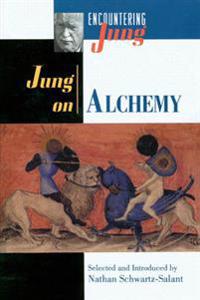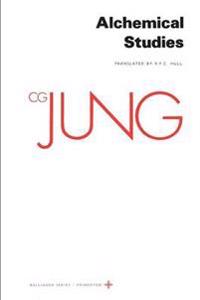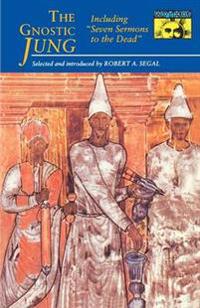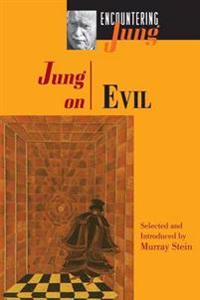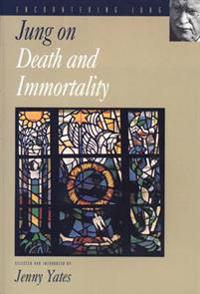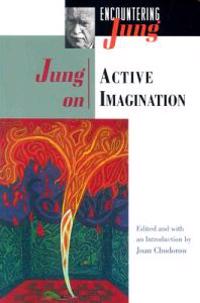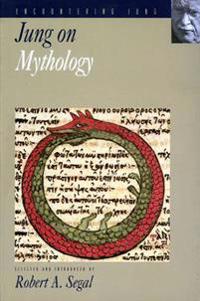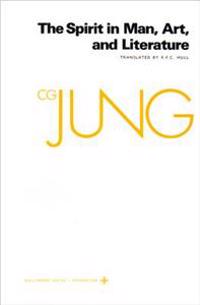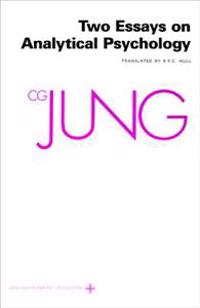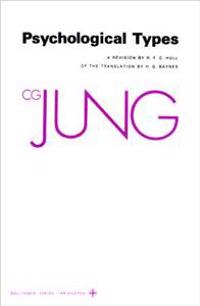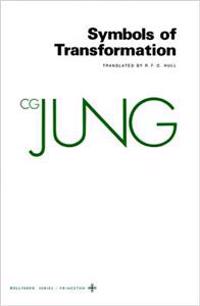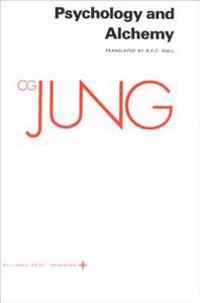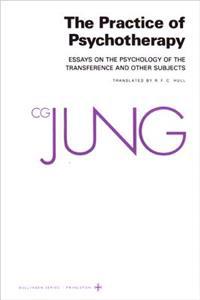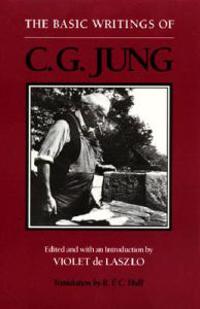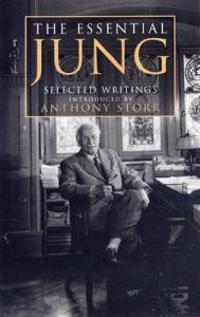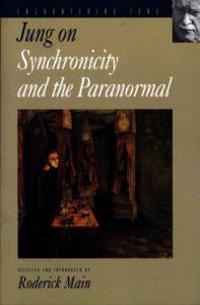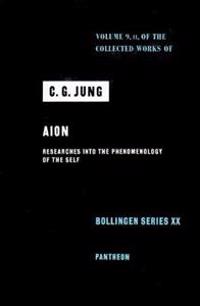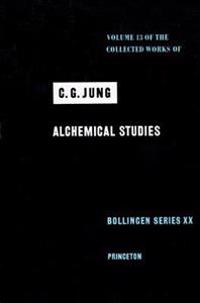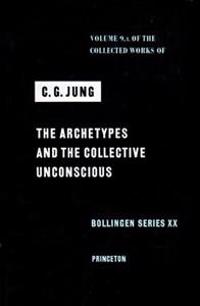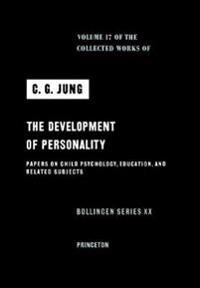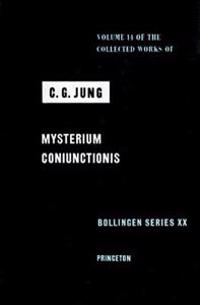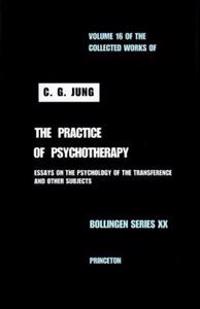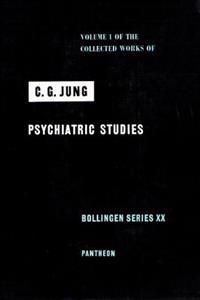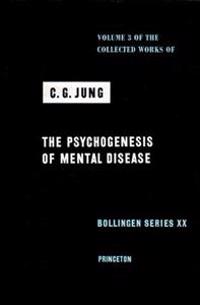Jung on Alchemy (Häftad)
avCarl Gustav Jung, Jung (Ed by Schwartz-Salant), Jung &Ed by Schwartz-Salant&
ISBN: 9780691010977 - UTGIVEN: 199512The ancient practice of alchemy, which thrived in Europe until the seventeenth century, dealt with the phenomenon of transformation--not only of materials (ore into gold) but also of the human spirit (self into Other). Through their work in the material realm, alchemists discovered personal rebirth [...]
Collected Works of C.G. Jung, Volume 13: Alchemical Studies (Häftad)
avCarl Gustav Jung, C. G. Jung, Jung
ISBN: 9780691018492 - UTGIVEN: 1983-08Five long essays that trace Jung's developing interest in alchemy from 1929 onward. An introduction and supplement to his major works on the subject, illustrated with 42 patients' drawings and paintings.[...]
The Gnostic Jung: Selections from the Writings of C.G. Jung and His Critics (Häftad)
avCarl Gustav Jung, C. G. Jung, Robert A. Segal
ISBN: 9780691019239 - UTGIVEN: 199206Gnosticism, together with alchemy, was for C. G. Jung the chief prefiguration of his analytical psychology. Jung did not simply interpret Gnostic texts psychologically but also cited them as confirmation of his psychology. An authority on theories of myth and Gnosticism, Robert Segal has searched th[...]
Jung on Evil (Häftad)
avCarl Gustav Jung, C. G. Jung, Jung
ISBN: 9780691026176 - UTGIVEN: 199607Well-known for his articulation of the "shadow side" of human individuality and culture, C. G. Jung wrote a great deal about the question of evil throughout his life and in scattered places in his work. In this book his position is pieced together from many sources. In his early work on the unconsci[...]
Jung on Death and Immortality (Häftad)
avCarl Gustav Jung, C. G. Jung, Jenny Yates
ISBN: 9780691006758 - UTGIVEN: 199910"As a doctor, I make every effort to strengthen the belief in immortality, especially with older patients when such questions come threateningly close. For, seen in correct psychological perspective, death is not an end but a goal, and life's inclination towards death begins as soon as the meridian [...]
Jung on Active Imagination (Häftad)
avCarl Gustav Jung, C. G. Jung, Joan Chodorow M. D.
ISBN: 9780691015767 - UTGIVEN: 199707All the creative art psychotherapies (art, dance, music, drama, poetry) can trace their roots to C. G. Jung's early work on active imagination. Joan Chodorow here offers a collection of Jung's writings on active imagination, gathered together for the first time. Jung developed this concept between t[...]
Jung on Mythology (Häftad)
avCarl Gustav Jung, C. G. Jung, Robert A. Segal
ISBN: 9780691017365 - UTGIVEN: 199807At least three major questions can be asked of myth: what is its subject matter? what is its origin? and what is its function? Theories of myth may differ on the answers they give to any of these questions, but more basically they may also differ on which of the questions they ask. C. G. Jung's theo[...]
Collected Works of C.G. Jung, Volume 15: Spirit in Man, Art, and Literature (Häftad)
avCarl Gustav Jung, C. G. Jung, Michael Fordham
ISBN: 9780691017754 - UTGIVEN: 197111Nine essays, written between 1922 and 1941, on Paracelsus, Freud, Picasso, the sinologist Richard Wilhelm, Joyce's Ulysses, artistic creativity generally, and the source of artistic creativity in archetypal structures.[...]
Collected Works of C.G. Jung, Volume 7: Two Essays in Analytical Psychology (Häftad)
avCarl Gustav Jung, C. G. Jung, Adler Gerhard
ISBN: 9780691017822 - UTGIVEN: 197204This volume has become known as perhaps the best introduction to Jung's work. In these famous essays. "The Relations between the Ego and the Unconscious" and "On the Psychology of the Unconscious," he presented the essential core of his system. Historically, they mark the end of Jung's intimate asso[...]
Collected Works of C.G. Jung, Volume 6: Psychological Types (Häftad)
avCarl Gustav Jung, C. G. Jung, Michael Fordham
ISBN: 9780691018133 - UTGIVEN: 197610One of the most important of Jung's longer works, and probably the most famous of his books, "Psychological Types" appeared in German in 1921 after a "fallow period" of eight years during which Jung had published little. He called it "the fruit of nearly twenty years' work in the domain of practical[...]
Collected Works of C.G. Jung, Volume 5: Symbols of Transformation (Häftad)
avCarl Gustav Jung, C. G. Jung, Michael Fordham
ISBN: 9780691018157 - UTGIVEN: 197701A complete revision of "Psychology of the Unconscious" (orig. 1911-12), Jung's first important statement of his independent position.[...]
Collected Works of C.G. Jung, Volume 12: Psychology and Alchemy (Häftad)
avCarl Gustav Jung, C. G. Jung, Herbert Edward Read
ISBN: 9780691018317 - UTGIVEN: 198010Over one hundred forty items, representative of Jung's interests and professional activities and spanning sixty years, include lectures, forewords, reviews, articles, and letters[...]
Collected Works of C.G. Jung, Volume 16: Practice of Psychotherapy (Häftad)
avCarl Gustav Jung, C. G. Jung, R. F. C. Hull
ISBN: 9780691018706 - UTGIVEN: 1985-12Essays on aspects of analytical therapy, specifically the transference, abreaction, and dream analysis. Contains an additional essay, "The Realities of Practical Psychotherapy," found among Jung's posthumous papers.[...]
The Basic Writings of C.G. Jung: (Revised R.F.C. Hull Translation) (Häftad)
avCarl Gustav Jung, C. G. Jung, Violet S. De Laszlo
ISBN: 9780691019024 - UTGIVEN: 1991-05In exploring the manifestations of human spiritual experience both in the imaginative activities of the individual and in the formation of mythologies and of religious symbolism in various cultures, C. G. Jung laid the groundwork for a psychology of the spirit. The excerpts here illuminate the conce[...]
The Essential Jung: Selected Writings Introduced by Anthony Storr (Häftad)
avCarl Gustav Jung, C. G. Jung, Anthony Storr
ISBN: 9780691029351 - UTGIVEN: 1999-12This volume presents the essentials of Jung's thought in his own words. To familiarize readers with the ideas for which Jung is best known, the British psychiatrist and writer Anthony Storr has selected extracts from Jung's writings that pinpoint his many original contributions and relate the develo[...]
Jung on Synchronicity and the Paranormal (Häftad)
avCarl Gustav Jung, C. G. Jung, Roderick Main
ISBN: 9780691058375 - UTGIVEN: 199810C. G. Jung had a lifelong interest in the paranormal that culminated in his influential theory of synchronicity. Combining extracts taken from the "Collected Works"; letters; the autobiographical "Memories, Dreams, Reflections; "and transcripts of seminars, "Jung on Synchronicity and the Paranormal"[...]
Collected Works of C.G. Jung, Volume 9 (Part 2): Aion: Researches Into the Phenomenology of the Self (Inbunden)
avCarl Gustav Jung, C. G. Jung, Michael Fordham
ISBN: 9780691097596 - UTGIVEN: 196901"Aion," originally published in German in 1951, is one of the major works of Jung's later years. The central theme of the volume is the symbolic representation of the psychic totality through the concept of the Self, whose traditional historical equivalent is the figure of Christ. Jung demonstrates [...]
Collected Works of C.G. Jung, Volume 13: Alchemical Studies (Inbunden)
avCarl Gustav Jung, C. G. Jung, Adler Gerhard
ISBN: 9780691097602 - UTGIVEN: 196802Five long essays that trace Jung's developing interest in alchemy from 1929 onward. An introduction and supplement to his major works on the subject, illustrated with 42 patients' drawings and paintings.[...]
Collected Works of C.G. Jung, Volume 9 (Part 1): Archetypes and the Collective Unconscious (Inbunden)
avCarl Gustav Jung, C. G. Jung, Michael Fordham
ISBN: 9780691097619 - UTGIVEN: 1969-01Essays which state the fundamentals of Jung's psychological system: "On the Psychology of the Unconscious" and "The Relations Between the Ego and the Unconscious," with their original versions in an appendix.[...]
Collected Works of C.G. Jung, Volume 17: Development of Personality (Inbunden)
avCarl Gustav Jung, C. G. Jung, Michael Fordham
ISBN: 9780691097633 - UTGIVEN: 195409Papers on child psychology, education, and individuation, underlining the overwhelming importance of parents and teachers in the genesis of the intellectual, feeling, and emotional disorders of childhood. The final paper deals with marriage as an aid or obstacle to self-realization.[...]
Collected Works of C.G. Jung, Volume 14: Mysterium Coniunctionis (Inbunden)
avCarl Gustav Jung, Lawrence Danson, C. G. Jung
ISBN: 9780691097664 - UTGIVEN: 197009Jung's last major work, completed in his 81st year, on the synthesis of the opposites in alchemy and psychology.[...]
Collected Works of C.G. Jung, Volume 16: Practice of Psychotherapy (Inbunden)
avCarl Gustav Jung, C. G. Jung, Michael Fordham
ISBN: 9780691097671 - UTGIVEN: 196606Essays on aspects of analytical therapy, specifically the transference, abreaction, and dream analysis. Contains an additional essay, "The Realities of Practical Psychotherapy," found among Jung's posthumous papers.[...]
Collected Works of C.G. Jung, Volume 1: Psychiatric Studies (Inbunden)
avCarl Gustav Jung, C. G. Jung, Gerhard Adler
ISBN: 9780691097688 - UTGIVEN: 197007Over one hundred forty items, representative of Jung's interests and professional activities and spanning sixty years, include lectures, forewords, reviews, articles, and letters[...]
Collected Works of C.G. Jung, Volume 3: Psychogenesis of Mental Disease (Inbunden)
avCarl Gustav Jung, C. G. Jung, Michael Fordham
ISBN: 9780691097695 - UTGIVEN: 1960-12This third volume of Jung's Collected Works contains his renowned monograph "On the Psychology of Dementia Praecox" (1907), described by A. A. Brill as indispensable for every student of psychiatry--"the work which firmly established Jung as a pioneer and scientific contributor to psychiatry." Also [...]
Collected Works of C.G. Jung, Volume 6: Psychological Types (Inbunden)
avCarl Gustav Jung, C. G. Jung, Michael Fordham
ISBN: 9780691097701 - UTGIVEN: 1971-08One of the most important of Jung's longer works, and probably the most famous of his books, "Psychological Types" appeared in German in 1921 after a "fallow period" of eight years during which Jung had published little. He called it "the fruit of nearly twenty years' work in the domain of practical[...]

